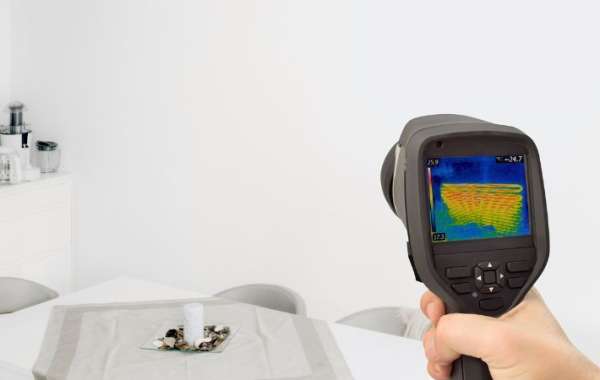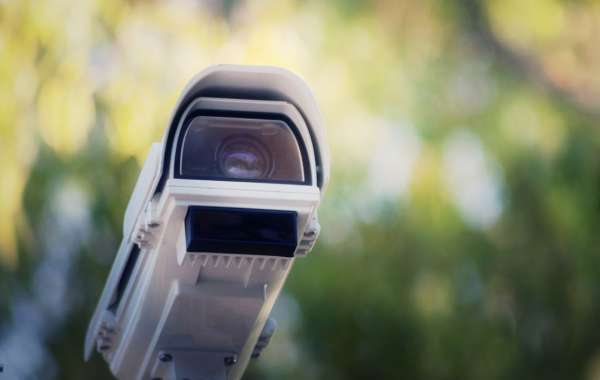The global radiation detection, monitoring, and safety market size stood at a value of around USD 3.39 billion in 2023. This market is poised for significant growth, with a projected Compound Annual Growth Rate (CAGR) of 6.73% in the forecast period of 2024-2032. This translates to a potential market value of nearly USD 6.11 billion by 2032, highlighting the increasing importance of radiation safety solutions.
Understanding the Product Landscape
The radiation detection market offers a diverse range of products catering to various needs. Some key categories include:
- Personal Dosimeters: These wearable devices measure an individual's radiation exposure, ensuring their safety in environments with radiation risks.
- Area Process Monitors: These continuously monitor radiation levels in workplaces, safeguarding personnel from accidental overexposure.
- Environmental Radiation and Surface Contamination Monitors: These instruments track radiation levels in the environment and on surfaces, protecting public health from potential contamination.
- Radioactive Material Monitors: These specialized devices are crucial for industries and medical facilities handling radioactive materials, ensuring proper handling and storage.
Detection Technologies Driving Innovation
The effectiveness of radiation detection relies on various technologies.
- Gas-Filled Detectors: These traditional yet reliable devices utilize the ionization of gas molecules by radiation for detection.
- Other Detection Technologies: Advancements in technologies like scintillation detectors, semiconductor detectors, and cloud chambers are driving market growth, offering enhanced sensitivity and portability.
Diverse Applications and End Uses
The need for radiation safety measures extends across various industries and sectors:
- Types: Detectors cater to specific radiation types like alpha, beta, gamma, and neutrons, with features tailored for different applications.
- End Uses: From nuclear power plants and healthcare facilities to research laboratories, food irradiation, and border security, diverse sectors rely on radiation safety solutions.
Regional Analysis: A Global Market with Varied Dynamics
The global radiation detection market exhibits regional variations:
- North America: Stringent regulations and a focus on advanced technologies make North America a leading market.
- Europe: European countries actively adopt advanced technologies for enhanced safety, contributing significantly to market growth.
- Asia Pacific: Rapid industrialization in this region is driving the demand for radiation safety solutions.
- Rest of the World: Emerging markets present unique challenges and opportunities as they build their radiation safety infrastructure.
Competitive Landscape: A Collaborative Approach
The market has established players with significant market share, alongside new entrants focusing on innovative solutions. Strategic collaborations and partnerships are key to market growth. Additionally, technological advancements from key players are shaping the market dynamics.
Emerging Trends Shaping the Future
Several key trends are influencing the future of the radiation detection market:
- The Rise of IoT and AI: Integration of Internet of Things (IoT) and Artificial Intelligence (AI) promises enhanced monitoring capabilities, allowing for real-time data analysis and improved response times.
- Nuclear Power Safety in Focus: Growing concerns over nuclear power plant safety drive the demand for advanced monitoring and detection systems.
- Healthcare Prioritizes Radiation Safety: The increasing use of radiation therapy and medical imaging necessitates advanced radiation safety solutions in healthcare facilities.
Challenges and Opportunities: A Balancing Act
While the market offers promising opportunities, challenges also exist:
- Navigating Regulatory Hurdles: Compliance with evolving regulations and standards can be complex and pose hurdles for market participants.
- Emerging Markets and Untapped Potential: Emerging markets present significant opportunities for growth, but require targeted strategies to address infrastructure gaps and raise awareness.
- Disaster Preparedness: Integrating radiation safety measures into disaster preparedness plans is crucial for mitigating risks in the event of accidents or natural disasters.
A Collaborative Future for Global Radiation Safety
The global radiation detection, monitoring, and safety market offers a glimpse into the future of responsible radiation usage. As the market grows, collaboration and innovation are vital in ensuring effective and accessible radiation safety solutions for all. By addressing existing challenges and capitalizing on emerging trends, we can create a world where the benefits of radiation are harnessed responsibly, fostering a safer environment for everyone.
Strategic Insights and Recommendations
This blog post has explored the key drivers, trends, and challenges shaping the global radiation detection market. To navigate this dynamic landscape effectively, here are some strategic insights and recommendations for various stakeholders:
For Market Players:
- Focus on Innovation: Invest in research and development to create next-generation detection technologies that are more sensitive, portable, and user-friendly.
- Cater to Niche Markets: Develop specialized solutions for emerging applications in areas like food irradiation, border security, and decommissioning of nuclear facilities.
- Embrace Digitalization: Integrate IoT and AI into your solutions to provide real-time data analysis, remote monitoring capabilities, and predictive maintenance features.
- Prioritize Partnerships: Collaborate with research institutions, government agencies, and other industry players to share knowledge, develop standards, and address regulatory hurdles.
For End Users:
- Stay Informed: Remain updated on the latest regulations and safety protocols related to radiation exposure in your specific industry.
- Invest in Training: Educate personnel on proper handling procedures, utilizing radiation safety equipment, and emergency response protocols.
- Choose the Right Equipment: Conduct a thorough needs assessment and select radiation detection solutions that best suit your specific application and budget.
- Maintain and Calibrate: Regularly maintain and calibrate your radiation detection equipment to ensure accurate and reliable readings.
For Regulatory Bodies:
- Streamline Regulations: Develop clear, concise, and up-to-date regulations that encourage innovation while ensuring robust safety standards.
- Promote Harmonization: Work towards harmonizing regulations across different regions to facilitate international trade and collaboration.
- Offer Training and Support: Provide training programs and educational resources to help stakeholders understand and comply with radiation safety regulations.




